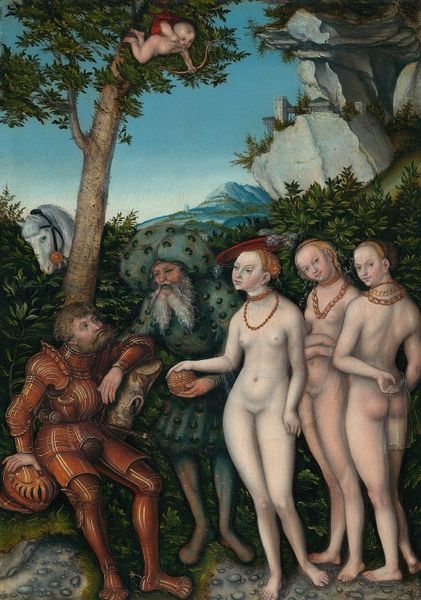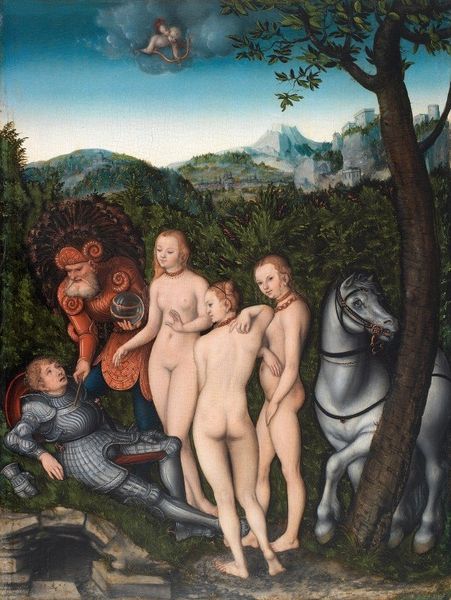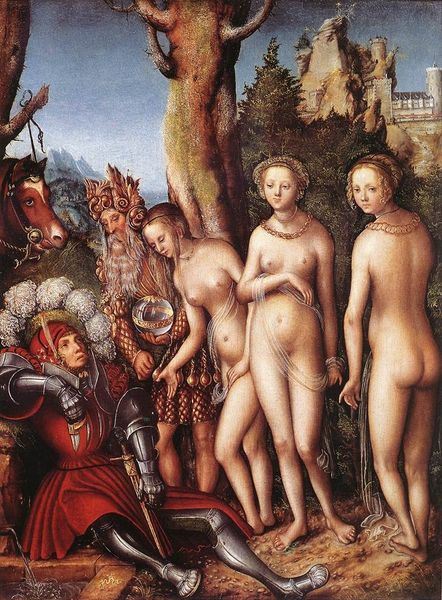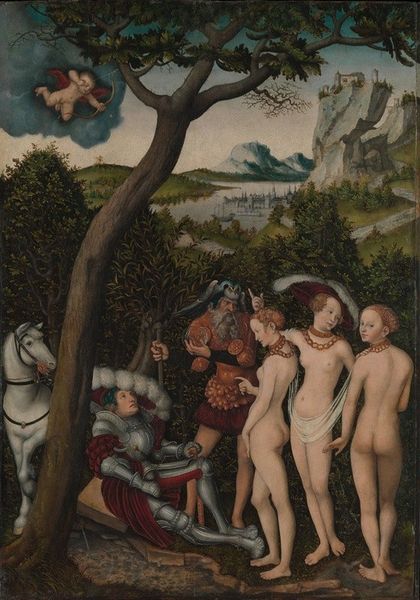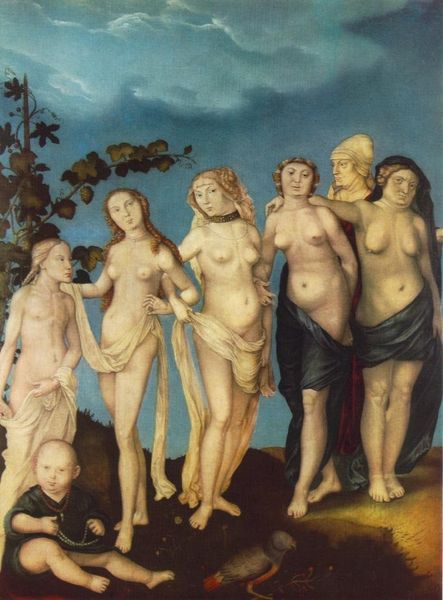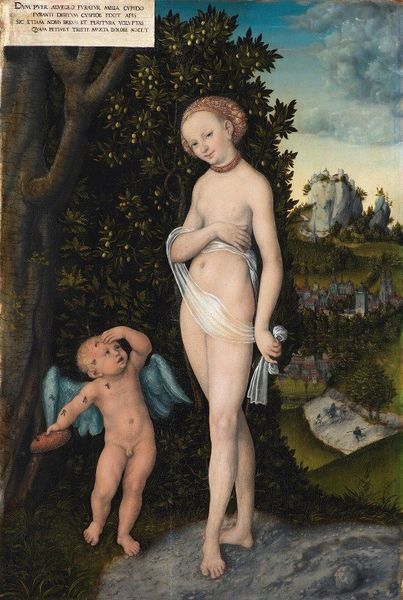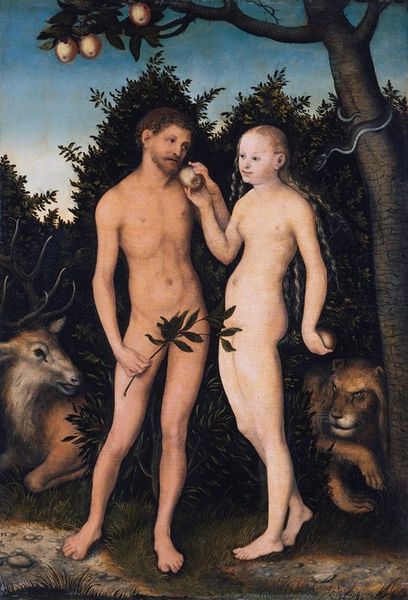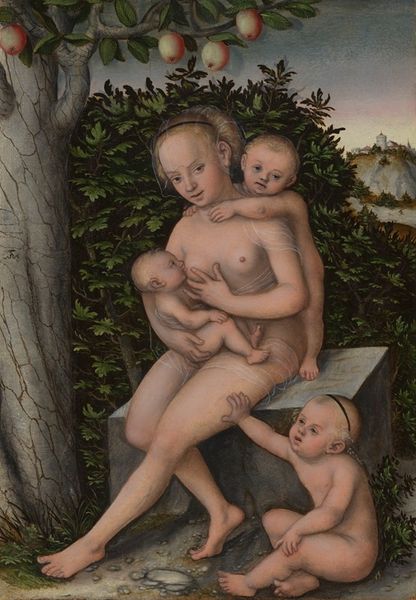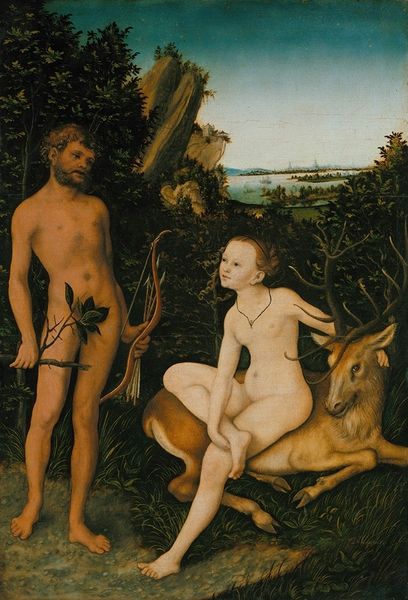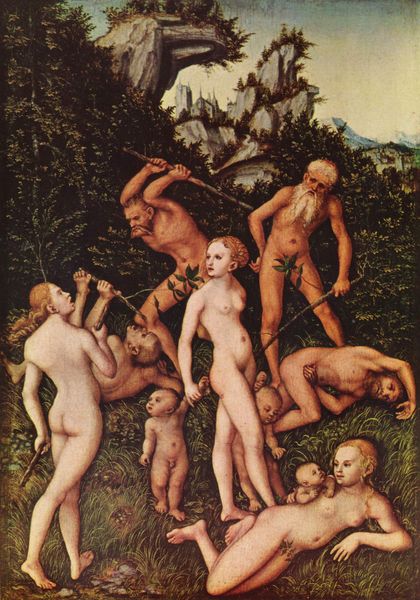
painting, oil-paint
#
portrait
#
allegory
#
painting
#
oil-paint
#
figuration
#
form
#
11_renaissance
#
oil painting
#
roman-mythology
#
cupid
#
men
#
mythology
#
history-painting
#
northern-renaissance
#
nude
#
realism
Copyright: Public domain
Curator: Let's explore Lucas Cranach the Elder's "The Judgement of Paris," painted around 1540. Editor: It's arresting! The paleness of the figures against the dark landscape is so striking, and then that aggressively ornate armor… What an odd composition. Curator: The painting depicts the classical myth where Paris, a Trojan prince, must judge which goddess is the fairest: Juno, Venus, or Minerva. This was often a pretext for artists to display female nudes, tapping into Renaissance interests in classical themes and the male gaze. Editor: Absolutely. And it’s not just about *depicting* nudes, it’s about the material conditions. Cranach's workshop churned these out. There’s a flatness to the forms, almost like they’re stamped. I wonder what kind of labor practices underpinned his success in Saxony. Curator: His workshop was very influential and certainly operated as a business, creating versions of the same painting that circulated widely to different patrons. Note the inclusion of Cupid at the very top center, firing his arrow, a potent visual symbol. Editor: Yes, even the cupid seems... mass-produced! Also, let's look at Paris's armor, an extravagant and laborious fabrication compared to the simplicity of the goddesses' adornments. Such contrast and perhaps a commentary on the excess of the princely court! Curator: The very fact that Cranach placed this mythological scene within a northern European forest is revealing about artistic license and audience expectations during the Renaissance. The court would've understood the connection to Humanist learning but perhaps were entertained by how comfortably these figures appear against this backdrop. Editor: That armor truly fascinates. What kind of metalworking practices and skillsets went into producing armor that ornate in 16th-century Germany? Thinking about it now gives the whole mythological setup some interesting context in relation to class, labor, and display in artmaking. Curator: Seeing how these mythological characters could seamlessly become part of a contemporary visual vocabulary opens a pathway into how artwork creates social links and maintains power relations. Editor: Indeed! By considering the context of materiality, labor and consumption of the image one is faced with broader political and economical questions about workshop production during the Renaissance. Thank you!
Comments
No comments
Be the first to comment and join the conversation on the ultimate creative platform.
